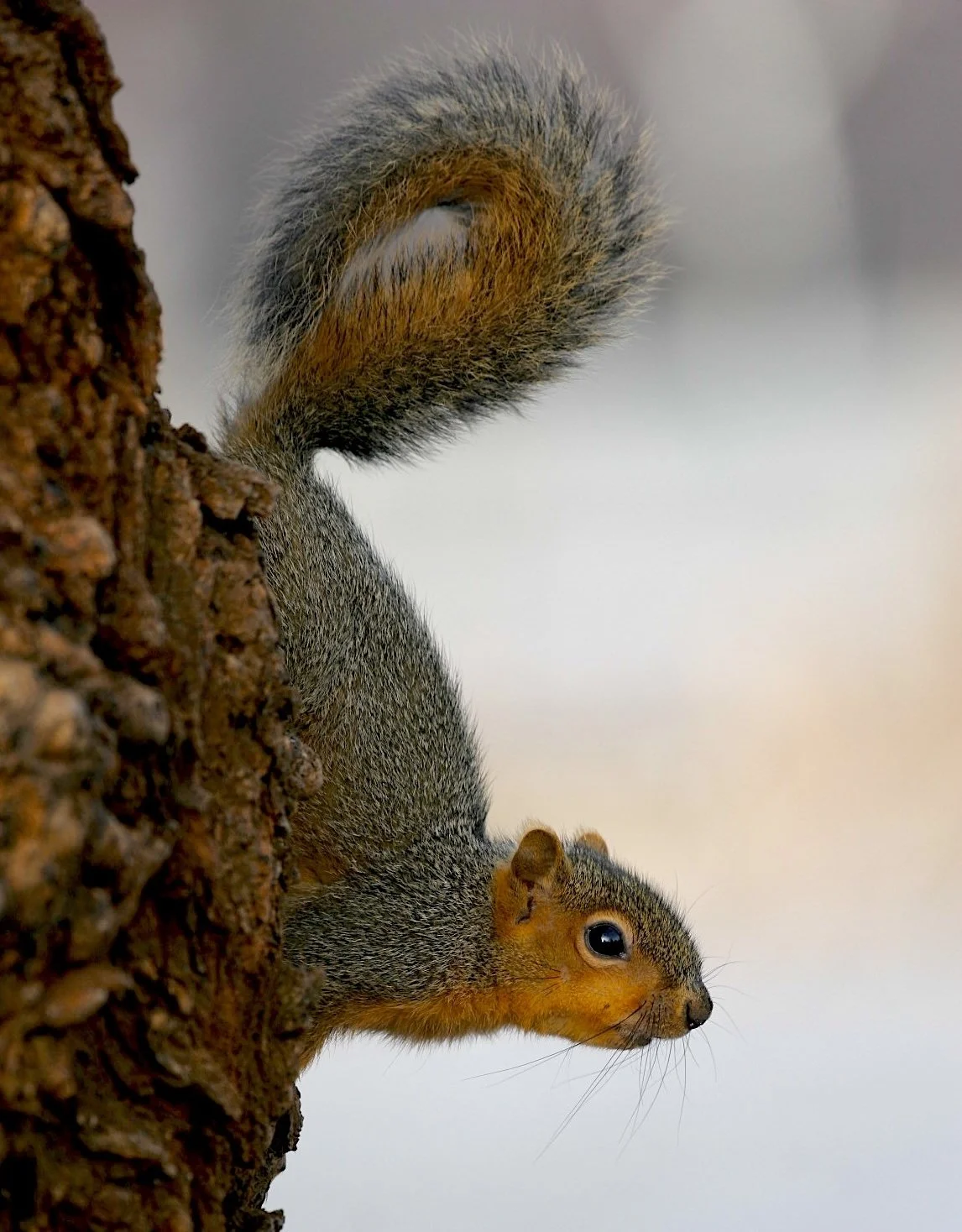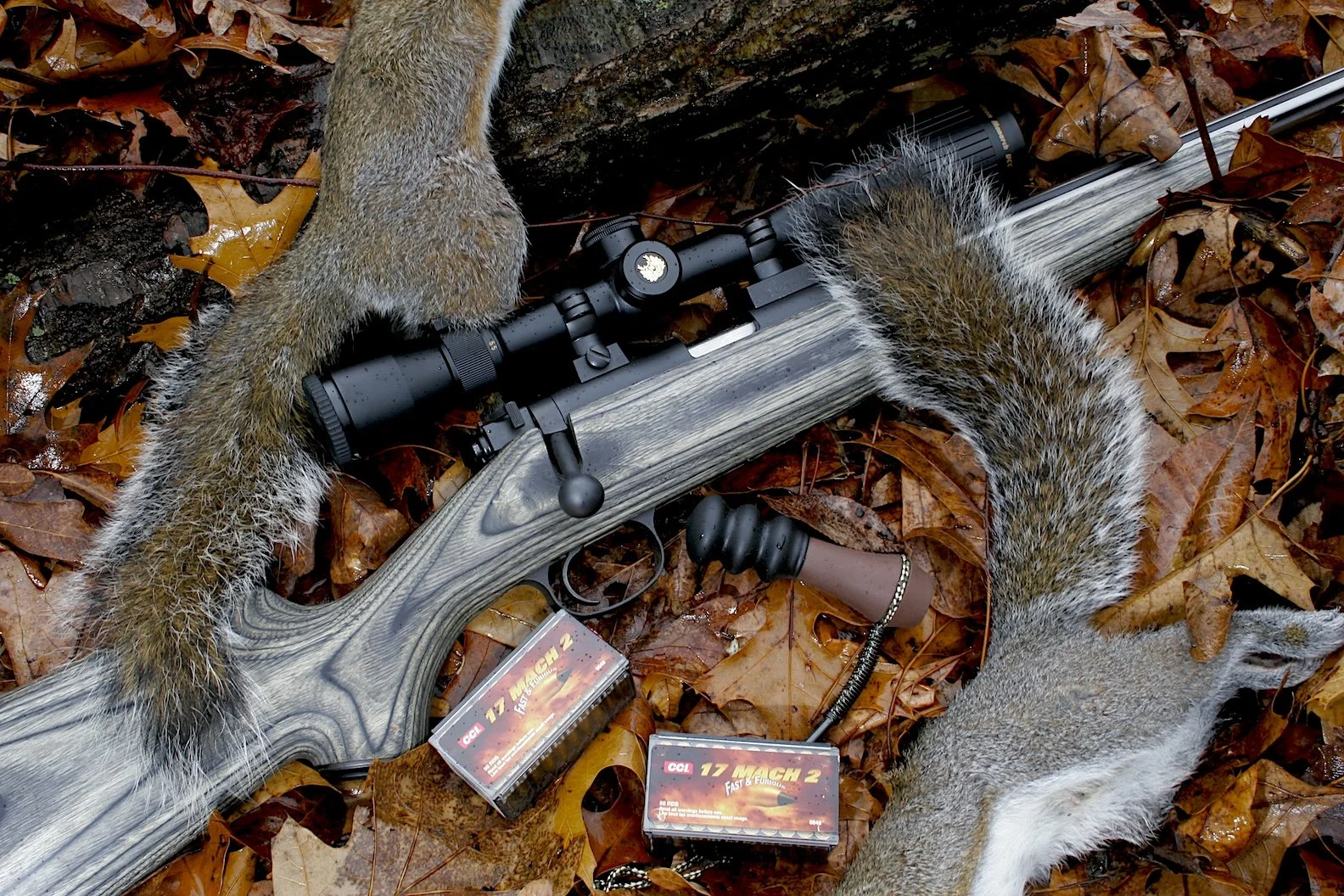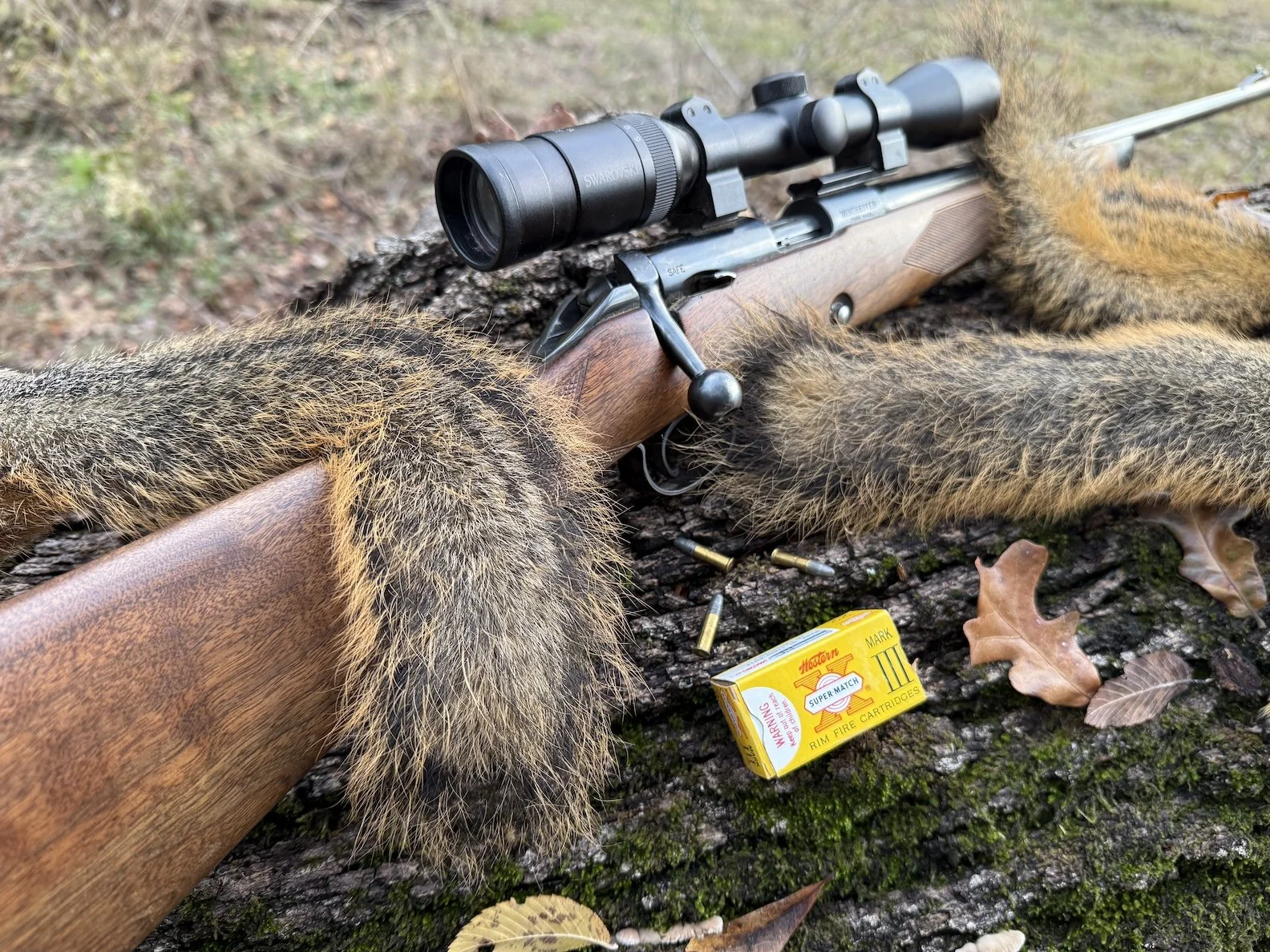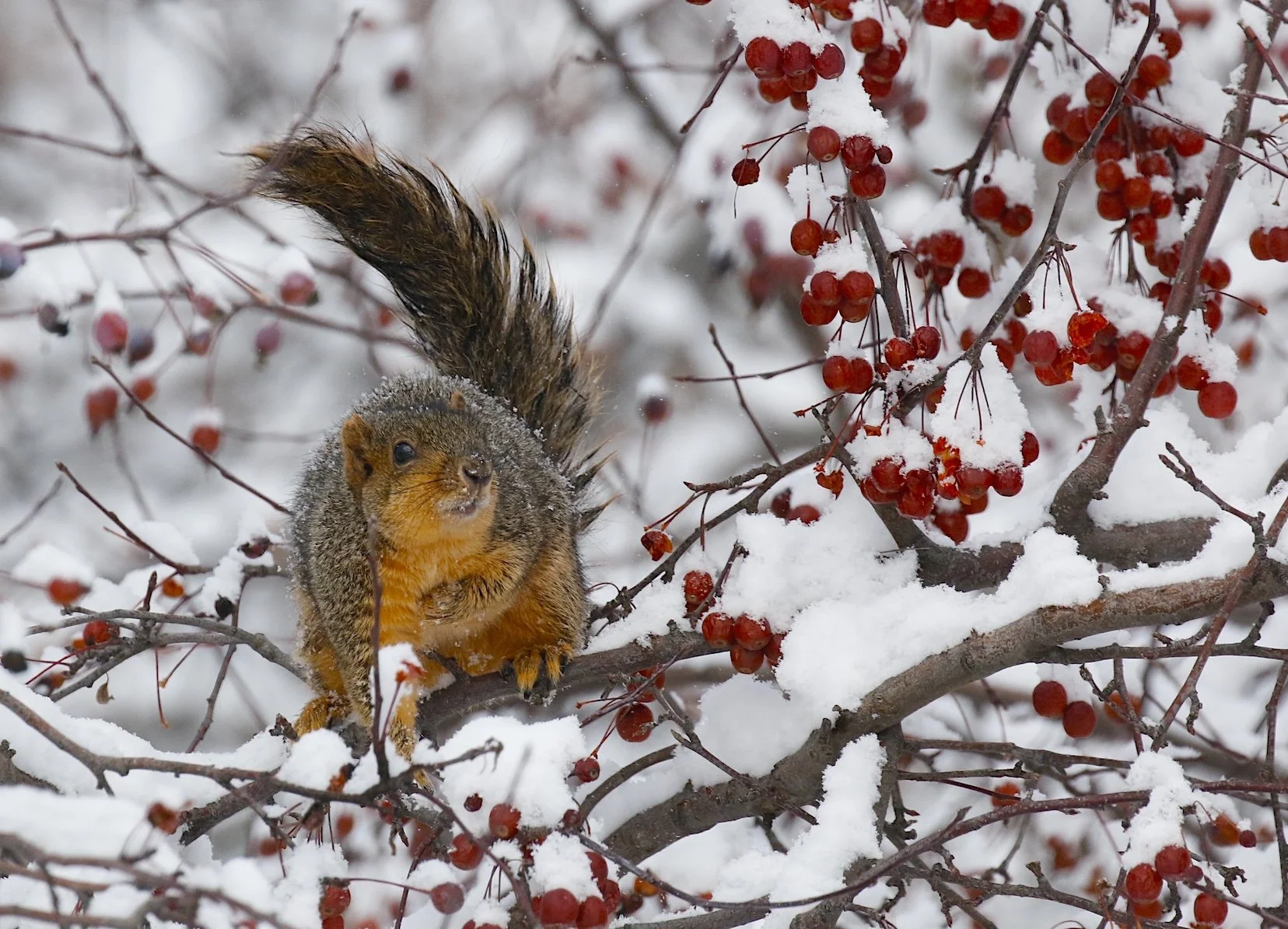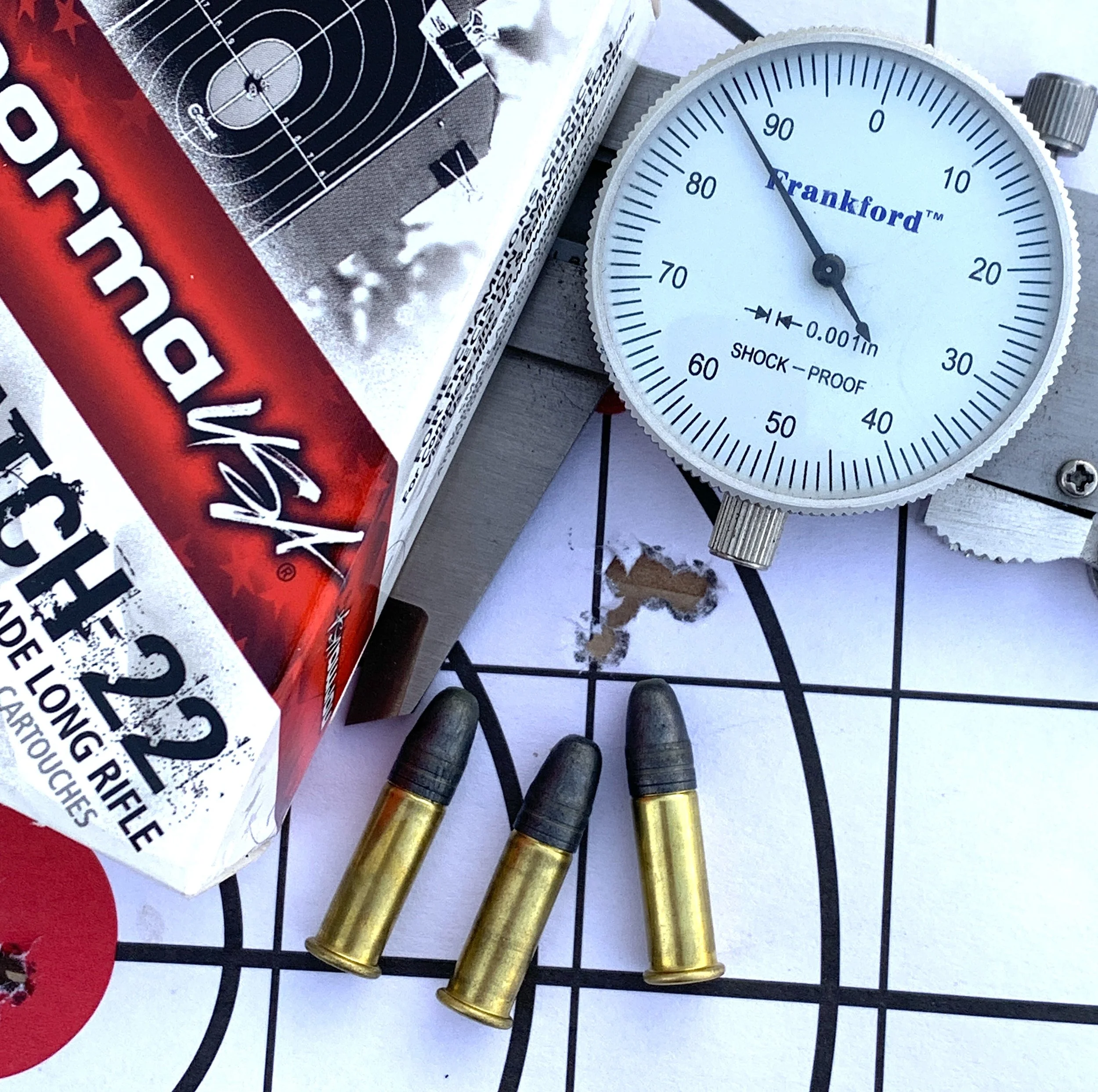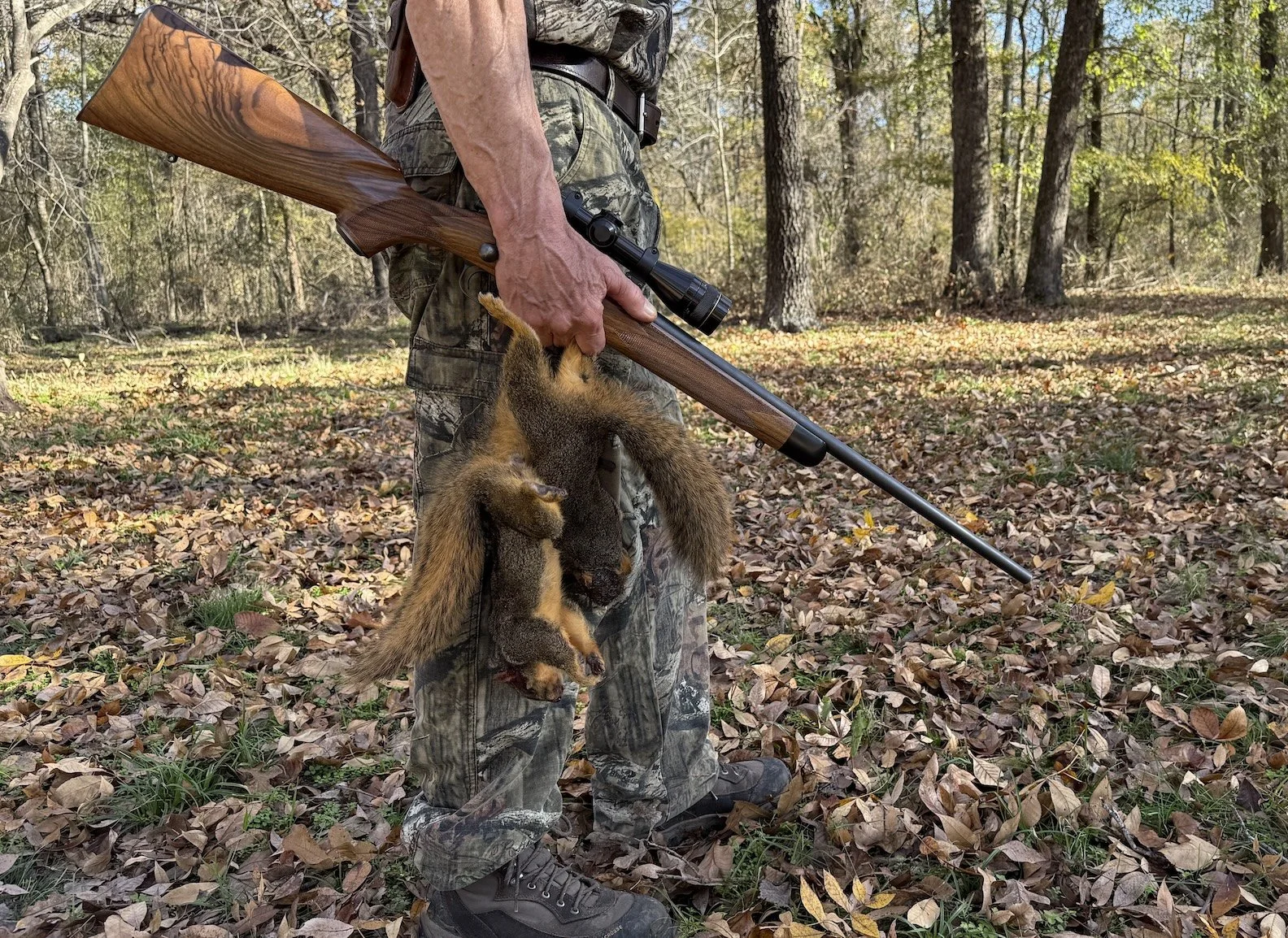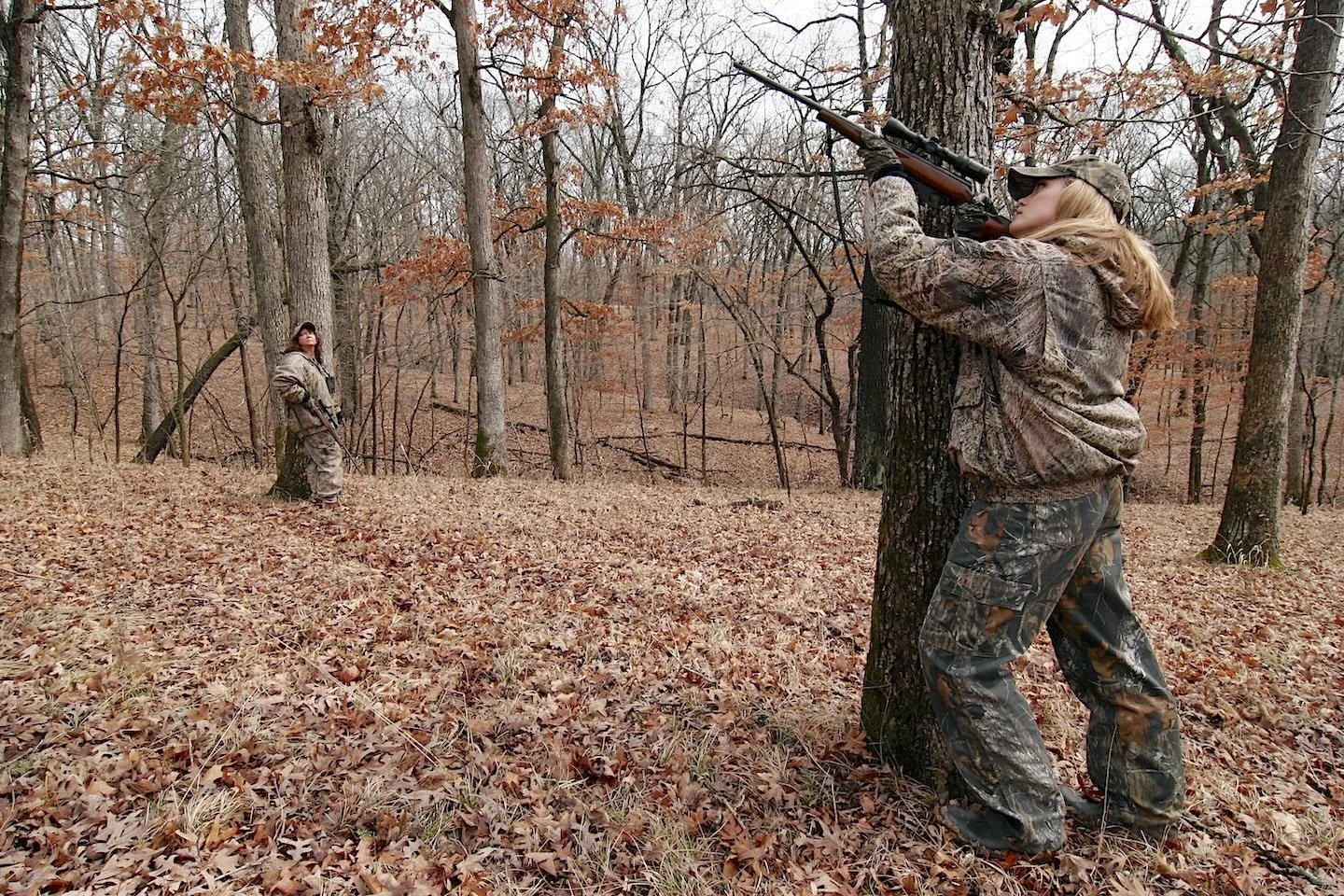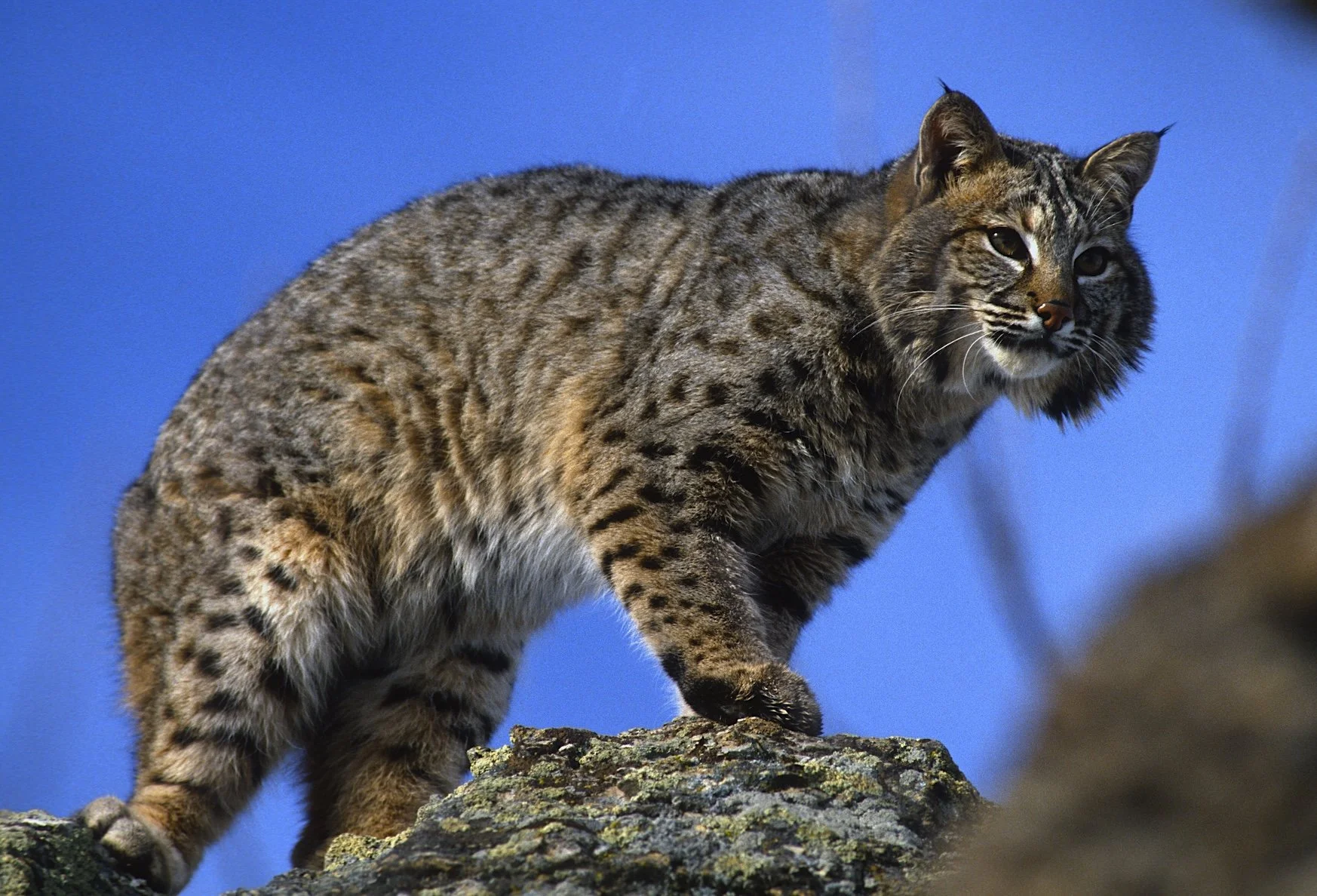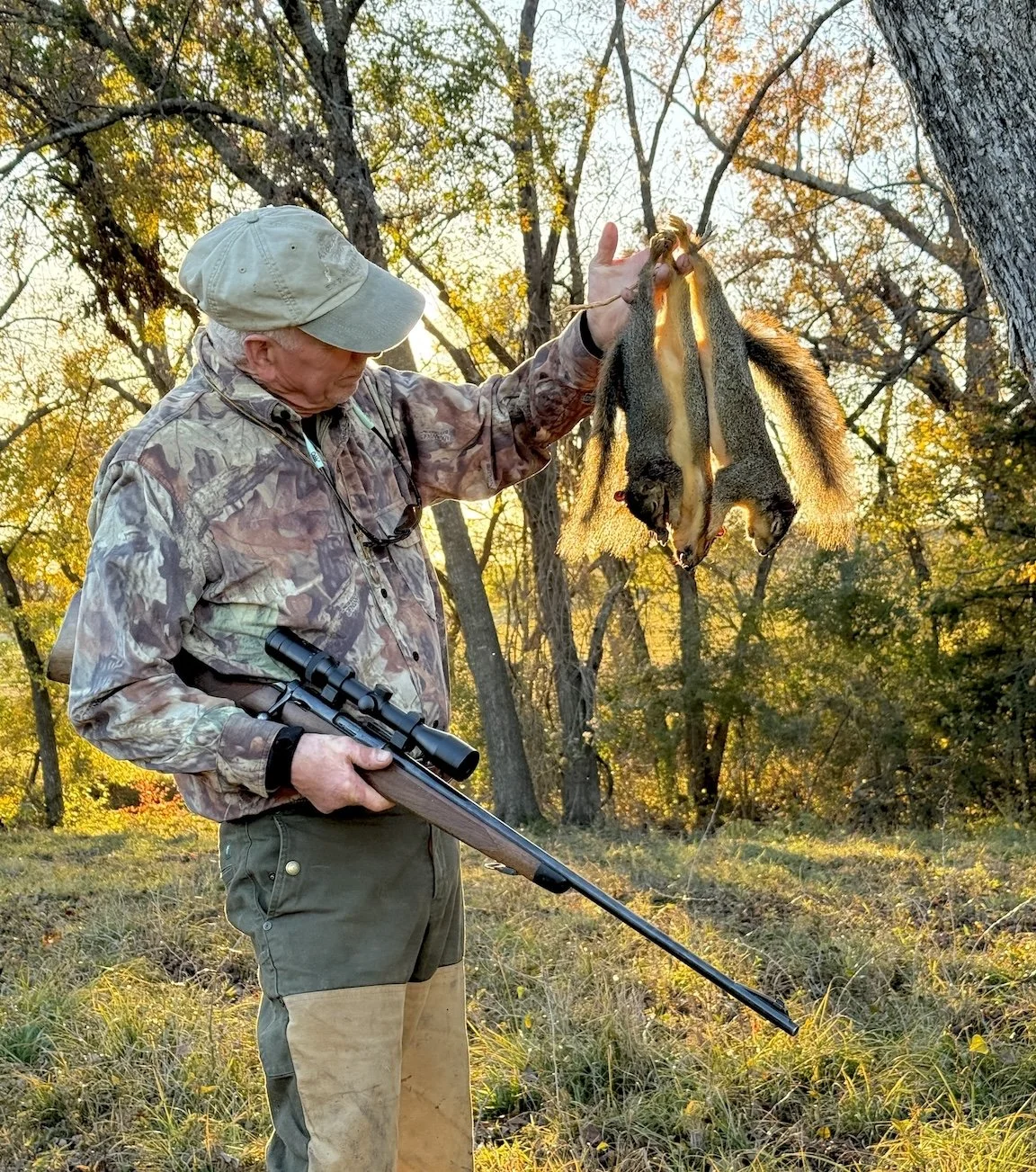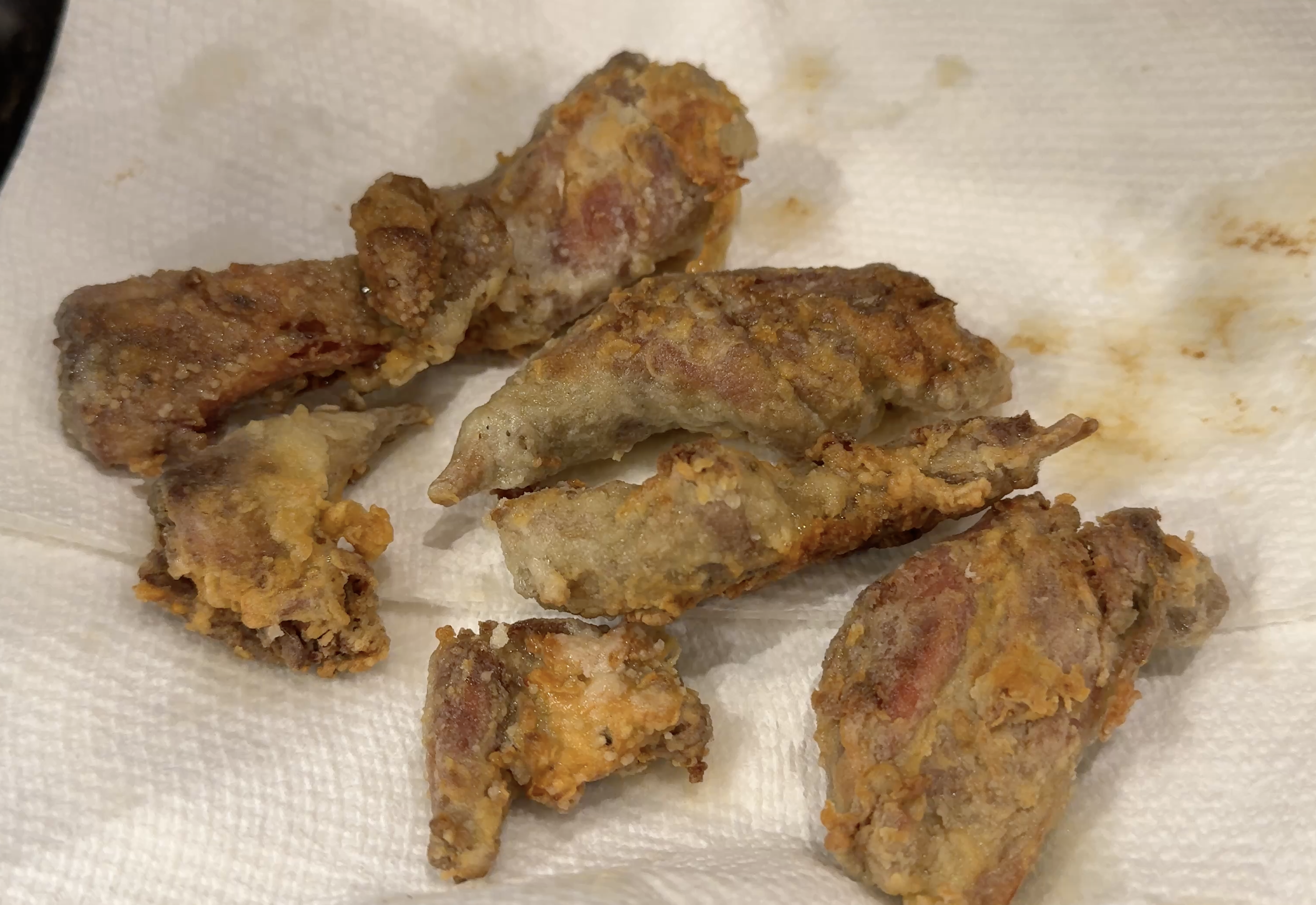How to Find Easy, Inexpensive Hunting (for Squirrels!)
By Ron Spomer
If you are one of the millions who can’t draw a tag, can’t find a place to hunt, can’t find abundant game even if you do find property on which to hunt, or can’t afford expensive tags and guiding fees, the information in this little article is for you.
I’m about to expose some of the most accessible and affordable hunting for some of the most abundant game species in North America. You don’t need to apply for scarce tags. You don’t have buy preference points or settle for one tag every few years or even once in a lifetime. You won’t be limited to 4-point bucks or antlerless deer. You won’t be restricted to a 3-day or one month season. And you won’t have to pay a $2,000 trespass fee or $10,000 guide/outfitter fee to hunt what 100 years ago was the second most popular game animal in the USA – tree squirrels.
A perky young fox squirrel hoping to avoid a dinner date with you.
Is This Why You Hunt?
Now, before you laugh and turn the page, read again that list above. Then pause to contemplate why you hunt. Sure, you probably dream of outwitting and taking home a stupendous, heavily antlered or horned old buck, bull, or ram. Something with a hard, durable, dramatic super structure you can touch, heft, keep and admire for the rest of your days. But that certainly is not all you want from your hunts.
Big game or small squirrels, getting outdoors to see, hear, smell, hike, spot game and shoot it cleanly with an accurate, well loved rifle is a big part of hunting’s allure.
I’m betting you long to hunt so that you can see what you otherwise only dream, hear what you only imagine. There you are, striding beside a splashing stream beneath towering firs, snowy peaks dead ahead, bear tracks on the muddy bank, salmon whirling in the pools. The whistling scream of a bull elk filters down the canyon. You pick up your pace, inhaling the perfume of decaying aspen leaves in the dew.
I’m also betting you don’t relish hunting season to escape the real world, but to escape to the real world, the natural world society is hell bent on burying under asphalt and concrete. I’m betting you hunt for freedom, for the chance to rediscover the simple, soulful joy of interacting one-on-one with the slow, quiet, nonjudgemental natural world. You are drawn to the hunt like a moth to the light because -- like the eagle, wolf, cougar -- hunting is what you were born to do.
Your hunting Dreamscape might look like this, but trust me, the real adventures you’ll find in your local squirrel woods will be just as rewarding. — and a lot less expensive.
Tree Squirrels Are the Answer - Everywhere
You’ll fulfill your natural calling as a hunter most easily in the squirrel woods. And to reach those woods you shouldn’t need to book a flight half-way across the continent. Try farmland woodlots. Prowl county, state, and national forests. Hunt Fish & Game wildlife management lands and Walk-In areas. Virtually any land with trees probably harbors tree squirrels. Eastern gray squirrels live from Maine to Florida to east Texas to eastern North Dakota. Eastern fox squirrels overlap them while thriving a bit farther west, not quite as far northeast. Southern Rocky Mountain ponderosa pine forests grow tassel-eared squirrels (Abert’s squirrel) while the Cascade and Sierra mountains bustle with western gray squirrels. The 8-ounce red or pine squirrel of the northern conifer forests is considered a bit too small to hunt by most, but some hunt them where legal.
Eastern gray squirrels are on average a bit smaller than fox squirrels, but wonderfully abundant from Maine to Florida and west to the eastern woodlands of the prairie states. The rare 17 Mach 2 cartridge/rifle provides longer reach than the 22 rimfires, but take head shots only or you’ll lose too much meat. Kimber K17 rifle, Nikon Monarch scope.
Squirrel Seasons Long, Bag Limits Large
In most jurisdictions squirrel hunting is open for months each year. Some state’s begin in June and remain open until December. Others open in early fall and stay open until the end of February. Bag limits are as generous as 10 per day in some states. Licenses good for the entire season are inexpensive and easily purchased with no tags, no limited drawings.
A Winchester M52B 22 Long Rifle is a classic, all-American squirrel rifle.
Permission to Squirrel-Hunt is Easy to Gain
Because most hunters seem fixated on deer, elk, and turkeys, squirrels go about their busy days virtually unnoticed. Farmers that relish trespass fees for bigger game often allow squirrel hunting for the asking. Some even ask for hunters to help reduce depredations on crops and gnawing destruction in barns. This may not be the case in traditional squirrel hunting states like Kentucky, but in states like the Dakotas, Nebraska, and Kansas, it often is. Ask and ye shall find out. Be aware that squirrel woods may remain off limits during deer seasons. Serious deer hunters don’t relish squirrel hunters disturbing their carefully laid plans.
Winter is prime squirrel hunting in some states.
Minimal & Inexpensive Squirrel Hunting Gear (Guns, Ammo, Scopes, Calls)
Squirrel gear can be as simple as any 22 rimfire rifle or small-gauge shotgun and a handful of ammo. Shotguns are easier to hit with if squirrels are nervous and animated, but a low-powered rimfire is the ticket for picking off sitting squirrels with head shots. No pellets to pick from the meat.
You don’t need hyper velocity or extreme horsepower so much as precise accuracy for hunting squirrels. 22 Match ammo is perfect.
My ideal squirrel rifle is a pinpoint-accurate 22 rimfire shooting subsonic, 40-grain bullets at about 1,000 fps. Shorts are a fine option, but I get best accuracy out of target/match grade long rifle loads. I’ve found a 3-9x scope with parallax adjustments down to 15 yards or so ideal for aligning clear views as near as 10 yards. Leupold’s 3-9x33 Freedom EFR (Extended Focus Range) is my go-to scope.
Here is my favorite squirrel rifle, a Kimber M82 Classic with French Walnut stock, ebony forend tip, steel butt and grip caps, Warne rings, and a Leupold 3-9×33 E.F.R. scope. What’s more fitting for hunting beautiful game in beautiful woodlands than a beautifully wood-stocked rifle?
How to Hunt Tree Squirrels
My hunting tactics include still-hunting until I find a squirrel concentration (usually at a food source like acorns, fruit, or a bordering corn field,) then sitting quietly until my quarry begins to show itself. Squirrels often bark and chatter. I’ll respond with a squirrel call. If that doesn’t bring them in (usually does,) I’ll still-hunt toward the ruckus, sometimes getting shots in the trees, often on the ground. Spooked squirrels may run off, dive into a den hole or leaf nest, or lie flat on a high limb, or huddle on the far side of a trunk. The old tactic of tossing a rock or branch to the far side usually spooks them into view.
I aim for the head between the eye and ear, which is one minuscule target, but oh so satisfying when you strike it and Mr. Rodent plummets from the treetops, all his delectable flesh intact.
Classic squirrel hunt. The young lady is shooting a Winchester Wildcat 22 long rifle in the Missouri hardwoods. I can’t remember if she hit anything, but I’ll bet she did.
How to Butcher Tree Squirrels
Here’s the only hard part of this whole program… separating the meat from the hide. I find that squirrel hide is in second place for resisting separation. Beaver hide is number 1. And the older the squirrel, the thicker and tougher that hide is. Last December I discovered a tool that really speeds things up – a Bobcat.
Not this bobcat….
… but this Bobcat, a unique little knife/hatchet/gut hook multi-tool from Knives of Alaska.
No, this doesn’t mean you leave your squirrels in the woods for a bobcat to find and eat. This Bobcat is a unique tool from Knives of Alaska. It looks like the amalgamation of a hatchet, meat cleaver, and gut hook. I first learned of it when my hunting partner and KOA owner Charles Allen unleashed it during our squirrel cleaning party last December. Charles, Tom Claycomb, and I had finished a glorious afternoon with some dozen fox squirrels, none of which were shedding their skins for us. It was dark-thirty by the time we set to work so I couldn’t get any photos or video. Our procedure was a bit like taking one’s socks off:
The more squirrels you bag, the more you clean, so sharpen your knives and get ready.
1. Dip squirrel in water to soak hide. (Minimizes loose hairs flying about and getting on meat.)
2. Cut off the front feet (so the claws don’t get in the way later.) Leave hind feet attached for grasping handles.
3. Cut off the tail (fly tying material!)
4. Cut off the head (optional.)
5. Cut an opening in the squirrel’s hide near the middle of its back (lift skin up and away from the backbone before cutting through with knife or scissors. Slice the hide around mid-section without breaking through the belly muscles. (Or use the Bobcat as described below.) This leaves you a front and back half of hide to pull off like a sock.
6. Insert fingers beneath each sliced section of hide along the spine.
7. Pull fore and aft, stripping the skin forward to the front legs and back to the hind legs.
8. Work a finger between the hide at the shoulders/neck where it tends to resist stripping, then pop it all over the severed neck. Pull off the tufts of hair remaining on the front legs.
9. Pull the back sleeve of hide over the hams to the ankle joint.
10. Cut off the ankles.
11. Open the body cavity and pull out all internal organs or…
12. Leave the body cavity intact, but cut (game shears) or slice off the back legs and front legs before cutting away the rib cage on each side of the big muscles (loins) along the backbone.
13. Dip pieces in ice water. This helps any attached hairs float away.
Freshly skinned and washed squirrels. A few stray hairs and the foreleg hair tufts still need to be removed.
Squirrel Hunter Knives and Other Tools
Where does the Bobcat come in? Use it for chopping off head and feet. Badda bing badda boom. Then insert the tip of its gut hook under your initial incision at the back and slide it clear around the mid-body. The hook’s cutting edge is so sharp that this is easy. The blunt nose of the gut hook prevents puncturing the gut cavity, always a challenge with a pointy knife. Many squirrel butchers skip slicing the hide clear around the body, but when I do this, the tender belly muscles tear open. If you’re accurate you can chop off the back legs at the the hip joint with the Bobcat, too.
Be prepared to use some muscle. We found it most efficient to put a man at each end of the carcass during the hide pulling. Our joking and story-telling also lightened the load, so use plenty of that. Resist cleaning squirrels all by yourself; not half as easy or fun as with a team.
A small, sharply pointed caping knife like the Pinnacle II from Diamond Blade Knives is perfect for the initial cut through the hide. If you’re good, you can use it to slice clear around the torso. Just be careful that you don’t puncture the belly.
P.S. We found the Bobcat Mini-Hatchet remarkably effective for skinning deer and pigs, too, is razor sharp edge working much like the famous Eskimo ulu blade.
Tenderizing Squirrel Meat
Marinate pieces in buttermilk, then dredge in seasoned flour before frying.
Squirrel seasons in many southeast states begin in June to take advantage of tender young squirrels. If you large, old squirrels, tenderize them before cooking. Folks like to soak pieces in buttermil, apple cider, or CocaCola (acidic). Some puncture the meat repeatedly with a fork (physical tenderizing,) boil until the meat falls from the bone, pressure cook them, or crock pot cook for hours.
For classic fried squirrel, marinate pieces for an hour or two in buttermilk, then roll in flour seasoned with salt and pepper and any other seasoning you like. Give pieces 15 minutes to set the coating. Fry quickly in your preferred oil to golden brown on each side. For a tough, old squirrel, simmer under a lid for two or three hours until tender. Do not let the moisture evaporate from the pan! Mix your seasoned coating flour and a bit of milk with the “drippings” in pan to make gravy. Potatoes or rice as a side dish, some peas, green beans or wild-caught asparagus and you’re fine dining like Daniel Boone and friends.
Wild game cookbooks and the internet are rife with squirrel recipes, so I won’t reiterate more here. Don’t be shy. Dive in. Squirrel is mild and lends itself to a wide variety of recipes from buffalo wings to Asian stir fry, burritos and empanadas, classic Kentucky fried, buttermilk fried… Enjoy the stress-free hunting. Enjoy the dining.
I’ll go out on a limb and predict you’ll love tree squirrel hunting.


